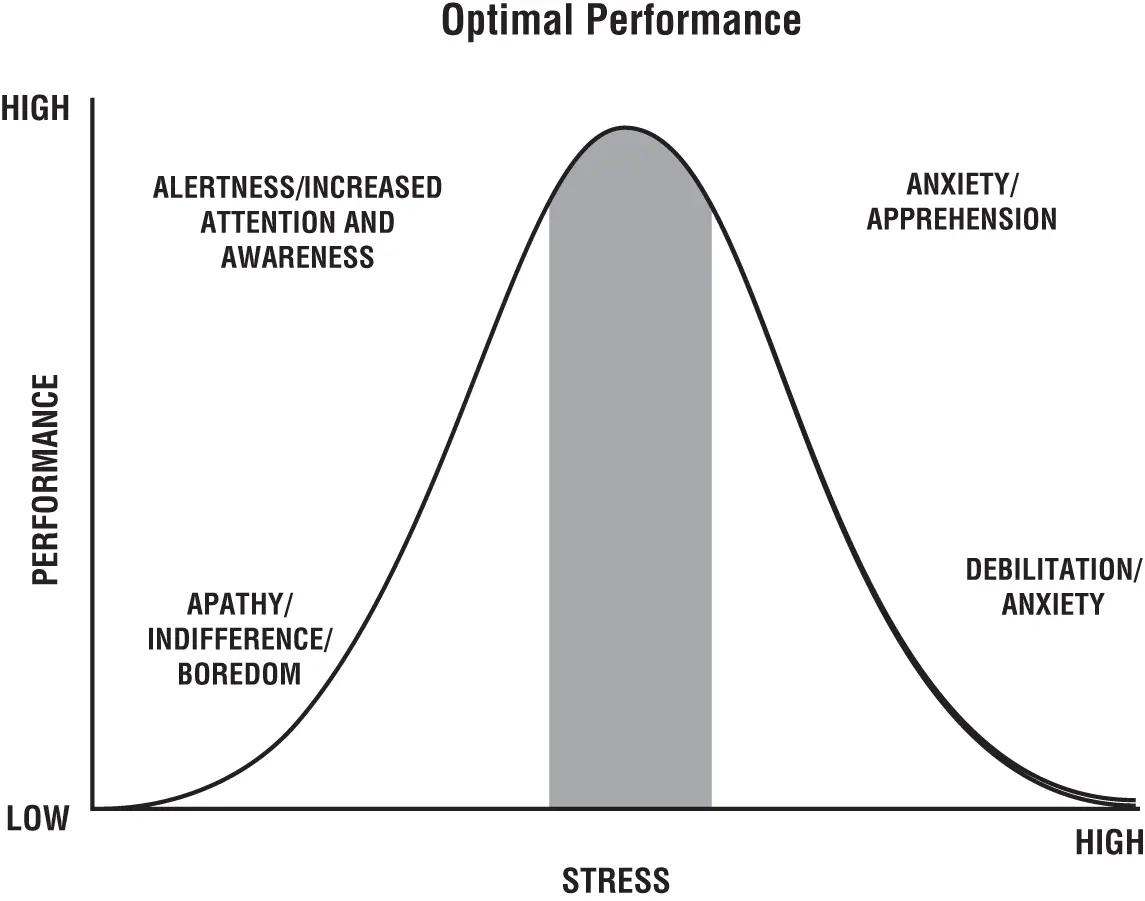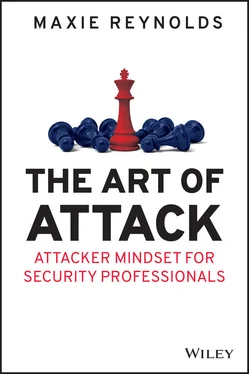In a network pen test, gathering as much information as possible for the compromised environments and the domain network means having situational awareness. Pre-entry, reconnaissance on infrastructure can tell you quite a lot about the target's network, too. Tools like NsLookup ( www.nslookup.io)—a command-line tool for querying the Domain Name System (DNS) to obtain a domain name or IP address, or other DNS records—and theHarvester ( https://github.com/laramies/theHarvester)—used to gather information of emails, subdomains, hosts, employee names, open ports, and banners—can give you a lot of information to start building your attack and increasing your awareness of the target's environment.
Including situational awareness in assessing whether your next step is for the good of the objective or not is non-negotiable. You cannot blindly attempt to obtain the objective; you must use the information you know and the information around you, reevaluating the further you get into the target's territory. Of course, this is true for actual events, but if you are practicing emergency conditioning in your mind you will have to imagine variations of what is included when assessing your surroundings. Which leads me to this: when practicing emergency conditioning, the purpose is to not get fixated on any one move or outcome.
The best analogy I have for it is this: if you have to picture yourself crossing a busy road, envision getting hit by a vehicle…a fun task. You have no way to know the color, make, model, year, or speed of the car, you won't know if it has a dashboard camera attached, and you won't know the direction it will hit you from, but you can imagine being hit by it at all speeds, what you'd do depending on the speed, where you get hit, and so forth. And then you can try to imagine dodging that car from different angles depending on its angle of approach. You can imagine it all a hundred ways or more, and you should always imagine surviving.
By imagining it, you will think of the sounds a car driving at a high speed makes, the difference in volume as it skids around a corner, and so forth. By doing this over and over, slightly differently every time, you might be better prepared when the time to cross the road actually comes. You would likely be quicker to dodge a car, even if in our imaginings it was yellow, and in actuality, it was a truck. I know, that was very uplifting.
This type of mental exercise is akin to emergency conditioning , which is just a training technique used to make unknown situations seem familiar. You are basically tricking your brain into being familiar with an experience so that when it, or something similar, actually unfolds in the real world, it doesn't seem as intimidating or daunting and your reaction rate will go up.
Notably, there is an upside to experiencing moderate levels of stress—even if you are just imagining the stress. Stress is often viewed as an absolute negative. It occurs when someone feels an imbalance between a challenge and the resources they have to deal with it. But it turns out that there are different kinds of stress and that, in smaller quantities, it can be very helpful. Eustress (beneficial stress) is a common form of stress. It's the sort of stress you feel before performing, and as EAs our job is to perform, in the sense of both execution and acting.
The factors that lead to eustress result in short-lived changes in hormone levels in the body. Normally, this type of stress does not last long and will not have long-term negative health effects. These smaller levels of stress can enhance our motivation. Small doses of stress can also force people to problem solve, ultimately building the skill and their own confidence in it. However, the relationship between the brain's health and stress is a very selective one, and there's no universal preferred amount of stress, because each of our brains is different. Most importantly, this effect is only seen when stress is intermittent. When stress continues for a prolonged period of time, there is a buildup of cortisol in the brain that can have long-term effects. Thus, chronic stress can lead to many health troubles. When chronic stress is experienced, our bodies produce more cortisol than it can release, and high levels of cortisol can wear down the brain's capacity to function properly. Several studies indicate that chronic stress impairs brain function by disrupting synapse regulation—resulting in the loss of sociability and the avoidance of interactions with others—by killing brain cells and even reducing the size of the brain. The prefrontal cortex, the area of the brain responsible for memory and learning, undergoes a shrinking effect when high levels of cortisol are present due to chronic stress. It can also increase the size of the amygdala, which can make the brain even more receptive to stress. A vicious cycle that has no upside.
The following graphic shows where optimal performance lies in conjunction with optimal stress and what can occur as a result. However, as noted previously, there's no universal preferred amount of stress. You will have to figure how much stress has the Goldilocks effect for you.

Finally, confidence in OAMs’ skills allows you as an attacker to stay on the offensive in live attacks, to be in a state of readiness. The bottom line of OAMs comes down to being able to analyze an organization, identify the security gaps and exploit them effectively, knowing the risks and acting anyway. You are the storm that forces change in critical infrastructure and environment.
Defensive Attacker Mindset
Defensive skills help attackers succeed consistently and in all conditions. Defensive skills include the capacity to adapt and respond to surges in security or target resistance. The key words that describe defensive mental skills are balance, resilience, and caution.
When your defensive skills are strong, you become a consistent performer, finding success in the smaller components as well as the overall attacks far more often. Whereas with OAMs the ability to apply change is a coveted skill, with DAMs the kernel of success is the ability to adapt to change. With DAMs, adapting with resiliency is critical.
Consistency and Regulation
There's another link between OAMs and DAMs we need to explore: offensive mental skills are necessary for excellence, but as attackers we need defensive skills to maintain excellence. OAMs’ penchant for stealth and competition—and the drive that comes with it—will be complemented by your defensive skills, allowing you as an attacker to be resilient and consistent in any conditions. This shows up when you pivot in a bid to win—your OAMs pushes this while your DAMs regulates it, making you consider the risks, even if fleetingly, and thus ensuring endurance. It also allows much of your agility to be executed carefully, because OAMs is primarily concerned with winning and will use persistence as a force, sometimes to the engagement's detriment. DAMs will take that power and cool it, keeping you stable.
Another way in which DAMs strikes a healthy balance with OAMs is in organization. Whereas OAMs demands that you pivot and apply new information for the good of the objective, DAMs allows for a standard to be adhered to. You must always apply information in an organized, efficient, and useful manner. You cannot blindly try things without surveying the environment for defenses that would thwart your plan.
One of the most important facets of DAMs is its capacity to help control anxiety. This becomes more critical, more vital, and even more indispensable as the critical stage of the attack approaches—this is recognizable as the point at which the significance of the operation typically increases. If you fail at that point, the operation is over. There is no room for error and no second chance.
Читать дальше













